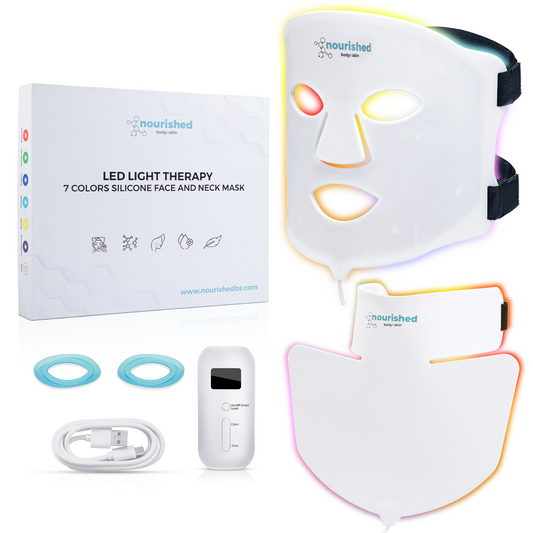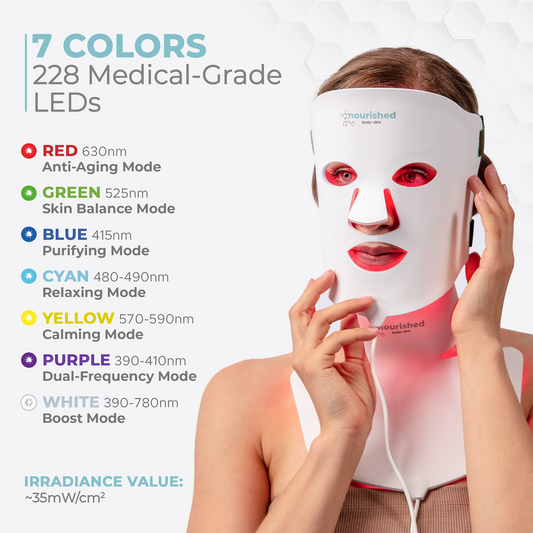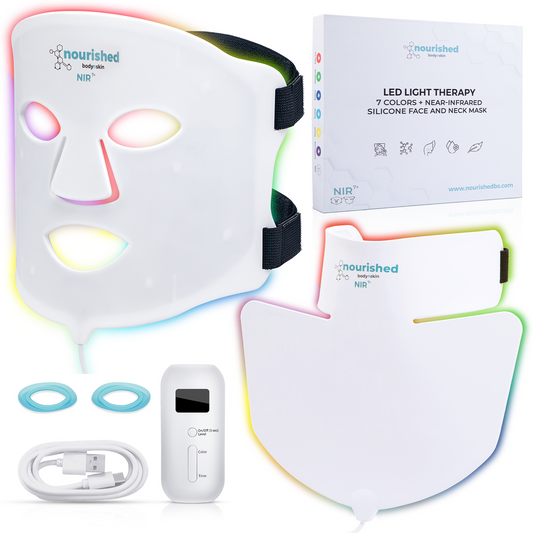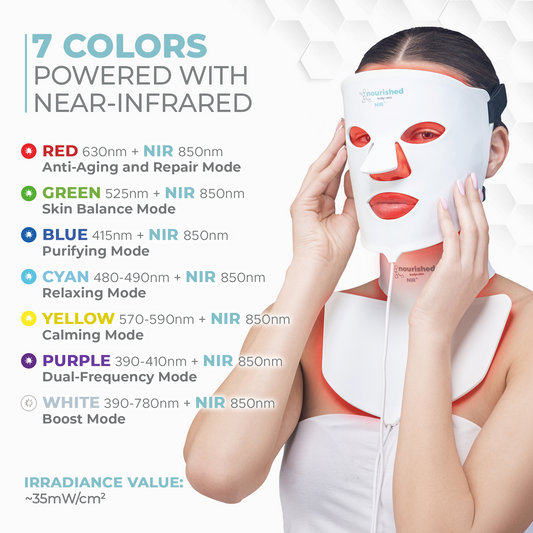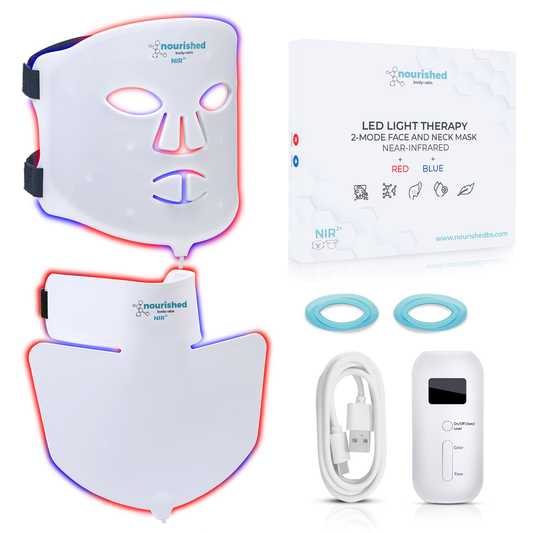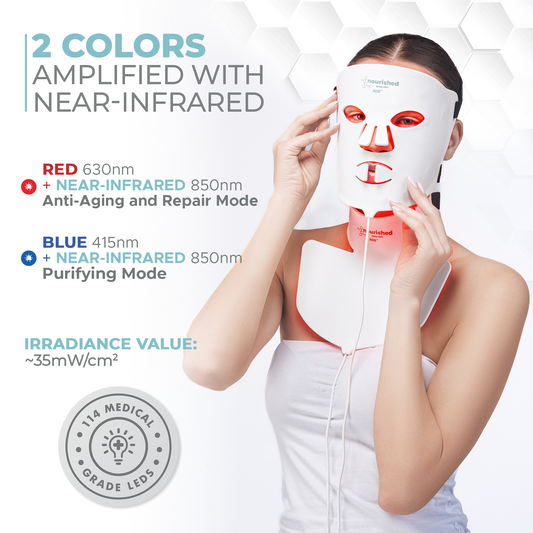Understand acne and discover how LED light therapy can help treat it

Acne, and any skin condition for that matter, can cause incredible amounts of stress to anyone affected. Whether you are a teenager or an adult, the toll it takes on one’s mental health can become crippling. Studies show that people with acne are more likely to experience depression, anxiety, and low self-esteem, significantly impeding one’s overall well-being and ability to interact with the world.
One reason acne becomes even more stressful is that not everyone knows how to deal with it or identify what type of skin condition they have. To arrive at a proper solution, asking the right questions is already half the answer.
Who gets acne?
| Acne is a common inflammatory skin condition that occurs when pores get clogged by oil, hair, and dead skin cells. |
When the clog isn’t removed by the natural shedding of the upper layer of the skin, the bacteria C. acnes feed on the buildup, consequently causing redness, swelling, irritation, and pain.
Acne knows no race or age. However, some may be more prone to acne due to factors like hormones, family history, medications, diet, stress, and hygiene habits. Acne also appears more common in males during their teenage years and continues into adulthood in females. For some, acne naturally goes away in their thirties, but for others, this problem continues into their forties and fifties.
Are pimples and acne the same?
You may have already heard the terms “acne” and “pimple” used interchangeably, but did you know that these terms are slightly different?
| Acne is the broader term for a skin condition characterized by the outbreak of one or more skin lesions. Through this context, pimples are a type of acne, but not all forms of acne are pimples. |
Types of acne
In detail, here are the types of acne one may experience:

1. Whiteheads
Whiteheads, or “closed comedones,” occur when a pore becomes blocked with dead skin, oil, and bacteria, creating a noticeable white or yellowish bump. Unlike other acne types, they aren’t inflamed or deeply set.
Comedogenic substances, often found in personal care products or certain fabrics, can cause these obstructions, particularly in oily or acne-prone skin.
2. Blackheads
Blackheads, or “open comedones,” occur when the clogged pores remain open on the skin’s surface. When the white or yellowish contents are exposed to air, they oxidize and turn hard and dark in color.
3. Papules
Papules are small, pink, raised bumps caused by inflamed hair follicles. These occur when the walls surrounding the pores break down from severe inflammation, resulting in stiff and usually painful lesions.
4. Pustules or Pimples
When one talks about “pimples,” they are actually referring to “pustules.” Pustules are like papules but are filled with pus. They are typically red around the base with a noticeable white or yellow pus-filled top.
5. Nodules
Nodules are a severe form of acne that causes hard, painful skin lesions. Nodular acne forms when clogged, swollen pores endure further irritation and grow larger. Thus, they’re larger than papules and pustules and are lodged deeper beneath the skin.
6. Cystic Acne
Cystic acne is the most severe form of acne, occurring when bacteria trigger inflammation deep within the skin, producing soft, painful, pus-filled pockets that look like large boils. If not treated properly, this type of acne can lead to permanent scarring, such as deep pits or indentations on the skin.
What should I do for my acne?

In some cases, healthy lifestyle changes may suffice. However, some may require a more comprehensive approach. Hence, it is advisable to consult a dermatologist first for effective healing and prevention of new lesions and scarring. Neglecting this may instead exacerbate a less severe acne condition, leading to undue stress.
1. Topical medications
Topical medications come in different forms, such as gels, lotions, creams, soaps, and pads. Some can be bought over the counter, but more potent types may need a prescription.
Common topical medications include antibiotics (clindamycin, erythromycin, benzoyl peroxide), resorcinol, retinoids, salicylic acid, and sulfur (though sulfur is not usually the first line of treatment due to possible drying and irritating effects).
2. Oral medications
For more severe cases, doctors may prescribe oral medications, typically taken for 1-2 months. Another round of treatment may be prescribed if the desired healing is not achieved.
Oral medications include antibiotics (used with topical therapies), oral retinoids, hormone therapy (primarily for women), and corticosteroids.
3. Adjunct skin therapies
Each individual may respond differently to different medications. Hence, individuals who do not respond to topical or oral medications may need additional treatments, such as superficial chemical peels, surgical procedures (to remove acne and repair scarring), or phototherapies like laser and LED light.
What is LED light therapy?

LED light therapy is the use of light emitted through semiconductor components called diodes (thus, the name Light-Emitting Diode) for therapeutic purposes. It is a non-invasive alternative that complements prescription and in-clinic treatments, offering a unique and practical approach to treating acne.
| The use of blue LED light has been scientifically proven to eliminate acne-causing bacteria in and around the sebaceous glands. This treatment also helps regulate oil production, a major factor in acne breakouts. |
However, blue LED light alone does not address the accompanying inflammation caused by acne. To maximize the benefits of LED light therapy for acne, red LED light is incorporated simultaneously with the blue light or applied sequentially afterward.

| Red LED light is widely recognized for its ability to reduce swelling, redness, and discomfort associated with skin lesions. Additionally, it stimulates collagen production, protein synthesis, blood circulation, and cellular growth, making it an ideal complement to the antibacterial properties of blue LED light. |
Learn more about light wavelengths in our Best LED Light Color for Your Skin guide.
Can LED light therapy help me with my case?

| As implied by the properties of blue and red LED lights, this type of treatment may be most effective for mild to moderate inflammatory acne types like papules and pustules (or pimples). |
Aside from being inflammatory, papules and pustules are bacterial by nature, making them more responsive to red, blue, or a combination of both LED light wavelengths.
For comedogenic acne, light therapy might not be as effective since these types of acne are non-inflammatory by nature and caused by chemical substances clogging the pores.
| However, some studies suggest LED therapy may help prevent whiteheads and blackheads by reducing oil production, consequently improving the skin’s resistance to oil-induced acne buildup. |
For severe types of acne, like nodules and cystic acne, LED light therapy alone may not be sufficient. These forms of acne are seated deeper within the skin and often require more intensive treatments, such as oral and topical medications.
However, near-infrared (NIR) light, which is present in many modern LED masks, penetrates deeper into the skin than visible light and can help to:
- Soothe inflammation at a subdermal level
- Stimulate blood circulation and tissue repair
- Support healing after breakouts and prevent scar formation
| For these reasons, NIR-enhanced LED masks may serve as a valuable adjunct treatment in managing more serious acne types—particularly when used alongside medical care. |
LED light therapy is generally safe, as it uses non-thermal spectral light to treat acne. However, if you have extra-sensitive skin, open wounds, or a condition that makes you reactive to light, we strongly recommend getting clearance from your doctor before use.
What LED light therapy product should I use?
Now that you’ve seen how light therapy can support your skin journey, it’s time to find the mask that fits seamlessly into your daily routine.
You can explore Nourished Bodynskin’s full lineup of LED light therapy masks, crafted from flexible, skin-hugging silicone to ensure optimal coverage and light absorption. We offer five mask variants, each tailored to different skincare needs, routines, and levels of customization.
1. 2-Mode LED Masks

|
2. 7-Mode LED Masks

|
3. 8-Mode LED Mask Set

|
Choosing the Right LED Colors for Real Skin Results
Our masks are specifically designed to feature the core, most scientifically studied wavelengths—blue and red light—to help target breakouts and reduce inflammation. To treat acne through LED light masks, use red and blue LED lights sequentially with the following method:
|
And to streamline the benefits of red and blue light, we added purple light to our 7-mode and 8-mode masks.
| The purple LED light is a dual-frequency wavelength that irradiates both blue and red light simultaneously. It’s specifically designed for enhanced acne treatment and as an aftercare option for procedures like Botox, fillers, and lasers. |
Other colors featured in our 7-mode and 8-mode masks—yellow, green, cyan, and white—target specific concerns such as redness, pigmentation, skin tone balancing, and overall rejuvenation.
With the right wavelength combinations and a mask that fits your lifestyle, radiant skin is more accessible than ever.
Still deciding? Use our LED Mask Buying Guide to compare features, or browse the LED Devices Collection and NIR+ LED Mask Series to find your perfect match.

